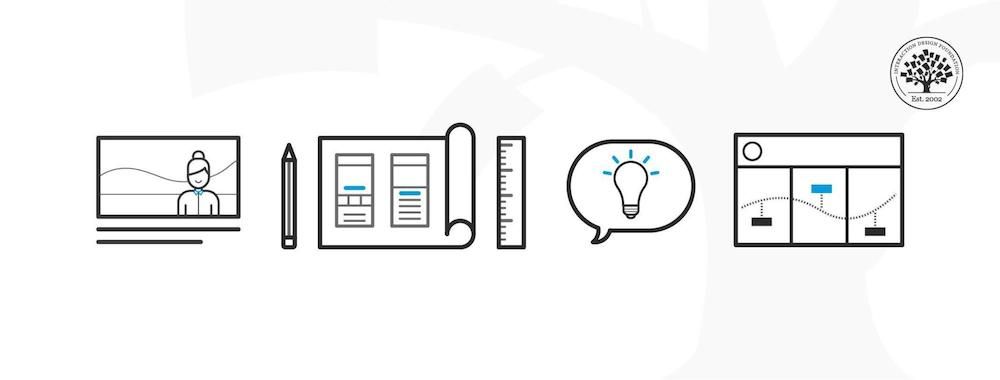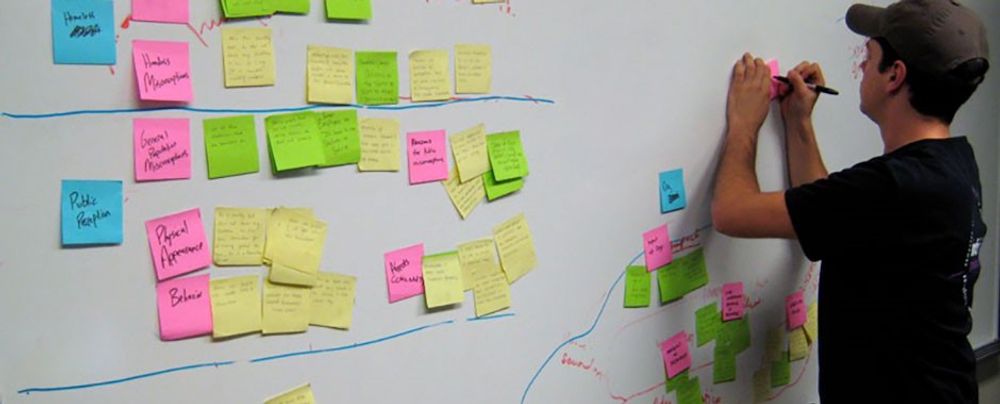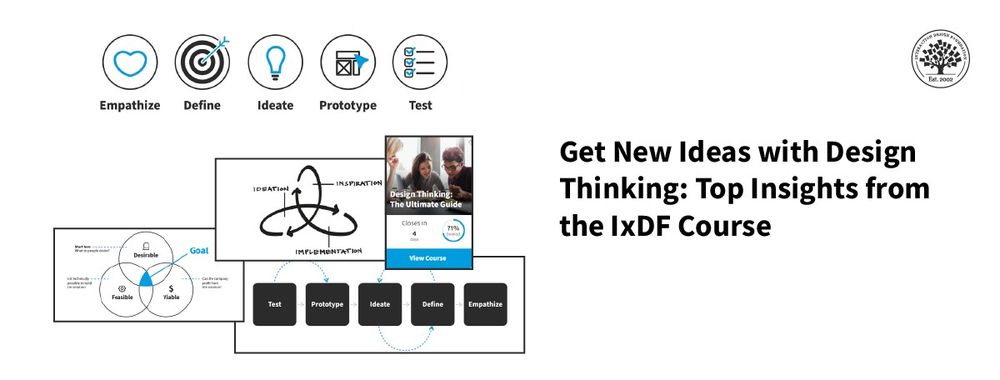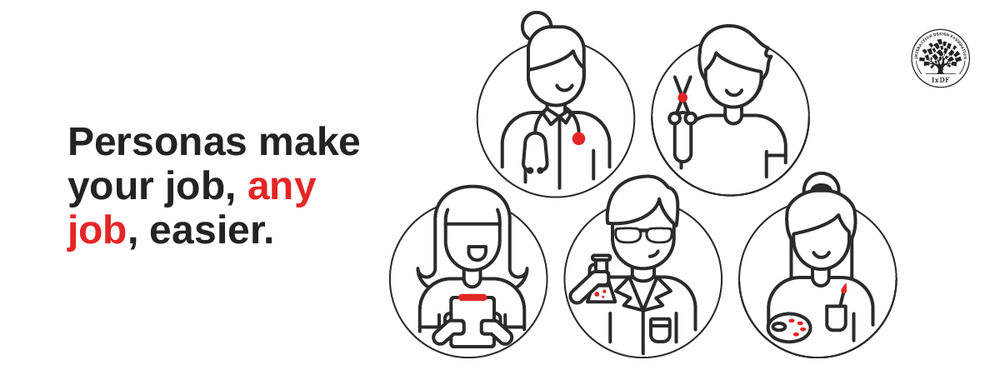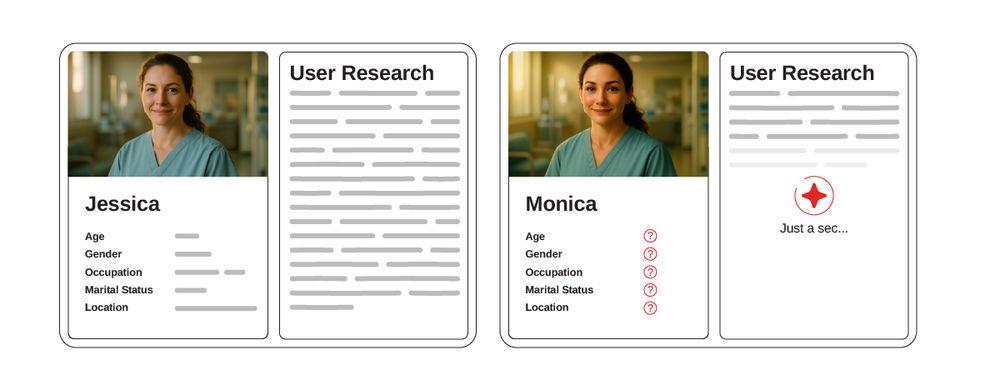Have you ever teared up watching a Pixar film? Felt the thrill when a superhero overcame impossible odds? Cheered for a villain’s redemption? That’s the power of great storytelling—and it's exactly the emotional clarity and focus that UX designers can bring into persona creation.
How do we make our personas less like bland cardboard cutouts and more like real characters? Easy, we borrow from Hollywood.
Let’s roll camera.
Act I: Every Product Needs a Star
Personas are fictional characters based on real user research. They help us understand who we’re designing for, what motivates them, and what challenges they face. Without them, design becomes a game of assumptions, feature creep, and poor decisions. Designing without personas is like navigating without a map.

© Interaction Design Foundation, CC BY-SA 4.0
Sound familiar? It’s the same reason every movie needs a protagonist. A story with no main character is just noise.
Think about your favorite movie character. Maybe it’s the underdog who fights against impossible odds, or the villain who’s so well-written, you almost root for them. What makes them memorable isn’t just their name, job, or demographic—it’s their why. Their motivation. Their internal tension. A good screenwriter knows that if they don’t understand what drives their characters, the audience won’t either. And that’s exactly how you should think about personas. Your persona needs that same narrative clarity. You’re not just documenting surface-level traits—you’re building a living, breathing human your team can empathize with. That means digging into what your users want, what’s standing in their way, what success looks like to them, and what might make them hesitate or give up. If a screenwriter doesn’t care about their character, the story falls flat. If your persona doesn’t feel real, no one on your team will care either. And if they don’t care, they won’t design for them.
For example, think of Luke Skywalker in Star Wars. He’s not just a teenager with a laser sword—he’s a dreamer with a clear goal: defeat the Empire and become a Jedi. His motivation isn’t tacked on—it shapes every scene. That’s why we care about him. And that’s why your team will care about your persona.
© Giphy, Fair Use.
Act II: Write Personas Like a Screenwriter
If your persona wouldn’t survive five minutes in a movie script, it’s time for a rewrite. Just like memorable characters, personas need more than a job title and a photo—they need goals that drive them, motivations that explain their choices, and obstacles that shape how they behave. When your team understands what your persona wants—and why it matters—they’re building for someone they care about, and that changes everything.
1. Give Them a Goal and Motivation
Great characters want something. So should your personas.
A persona for a fitness app might want to “run a 5K without stopping.”
A persona for a grocery delivery service could “need stress-free weekly shopping.”
Think of Elle Woods in Legally Blonde. She doesn’t just go to Harvard for fun. She wants to win back her ex. That clear motivation gives the film emotional punch, and keeps her relatable.
© Giphy, Fair Use.
Similarly, Priya, 34, is a busy single parent and project manager who does most of her online grocery shopping late at night. Her primary goal? To spend less time meal planning and avoid last-minute supermarket runs. She’s motivated by convenience and needs a solution that works with her unpredictable schedule.
When your persona's goal is specific and human, your product decisions become obvious, and your design becomes a story that fits their life.
2. Let Them Speak: Use the “Voice of the Customer”
In movies, dialogue reveals character. In UX design, we use affinity notes—real observations written in the first person, like quotes from our users.
“I hate when I can’t fall asleep because my brain won’t shut off.”
“I don’t want a ten-step ritual. Just one click and quiet.”
“Some days I just need to breathe for a minute between meetings.”
These snippets are more than quotes. They’re fragments of lived experience. You make you personas human when you write this way. It invites empathy and anchors their behavior in reality.
Think of Andy Dufresne in The Shawshank Redemption. His famous line—“Get busy living or get busy dying”—tells you everything about his mindset.
© Giphy, Fair Use.
The same goes for your users. In a meditation app project, a participant named Tasha, 42, a full-time caregiver, said: “I’m not trying to be enlightened. I just need five minutes to feel like myself again.” That single line captured her state of mind, her environment, and her goal—and it became the anchor for her persona. It wasn’t a made-up quote. It came straight from user research. That’s the voice of the customer. And when your personas speak with that kind of truth, they do more than guide design—they generate empathy and lead to products, services and experiences people love.
3. Backstories Aren’t Just for Superheroes (Don’t Just Write a Novel)
Characters don’t pop into the story from nowhere—they have a history that shapes them. Your personas need a backstory, too, but only what's relevant to their behavior. Add a bit of lifestyle, context, and pain points—just enough to make them relatable.
For example, think of Tony Stark in Iron Man. He’s not just rich and smart. He’s a weapons manufacturer with a crisis of conscience. That changes how he behaves.
© Giphy, Fair Use.
In UX design, it’s not about capturing everything—it’s about capturing what matters. You don’t need a detailed biography—just the right fragments that help your team feel who this person is. Like Albert, 36, a product manager at a fast-paced startup. He works across time zones, lives alone, and rarely disconnects from his phone. His work bleeds into his nights, and his mind is constantly juggling tasks—even at bedtime. He said, “My brain is always ‘on.’ Even when I’m lying in bed, I’m still running through sprint plans.” Albert’s backstory revealed that he needed something fast, frictionless, and practical—like a one-tap, 3-minute wind-down session with no fluff. His context made it clear: the more overloaded his life, the simpler the solution needed to be.
This is how a persona’s backstory earns its place—it directly shapes the product experience.
Act III: Make Your Personas Real
You’ve given your persona a clear goal, a voice, and a backstory. Now it’s time to bring them to life—visually, emotionally, and practically. Because just like in film, even the most compelling script falls flat without the right casting, set design, and on-screen presence.

© Interaction Design Foundation, CC BY-SA 4.0
A great persona doesn’t just exist in a slide deck. It shows up in your team’s daily conversations, design critiques, and decision-making. In this final act, we’ll look at how to give your personas a real presence—so they don’t just live on paper, but in the minds of your entire team.
1. Add a Visual, But Skip the Stock Photos
In Hollywood, casting is everything. In UX design, your personas need a face—ideally from real research. Stock photos feel fake. And please, no celebrities (unless your product is for celebrities).
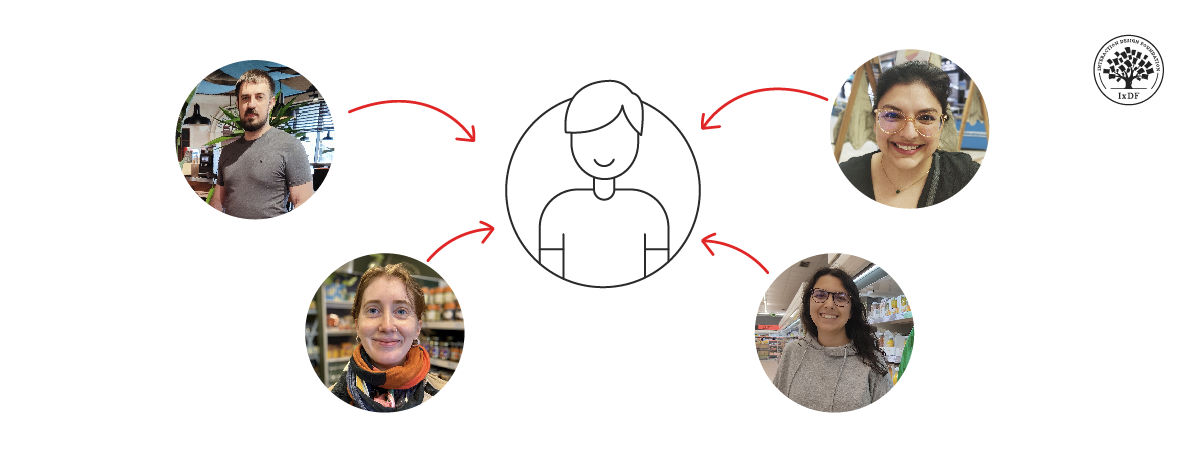
© Interaction Design Foundation, CC BY-SA 4.0
Imagine trying to sell The Devil Wears Prada with a smiling stock photo of a generic “businesswoman” instead of Miranda Priestly, who radiates power, precision, and quiet intimidation with every glance. Audiences connect with characters through the visual details—clothing, expression, posture—not just what they say.
Miranda Priestly isn’t memorable because of her job title. It’s her icy expression, the cut of her coat, the raised eyebrow that silently says “That’s all.” Her presence tells you who she is before she even speaks.
© Giphy, Fair Use.
It’s the same in UX design. When you put a face to a persona, your team immediately sees a person, not a profile. But it only works if the image feels real. Stock photos—especially the overly polished kind—introduce artificiality. They often show people, but not your people. Even worse, they can unintentionally reinforce stereotypes or feel culturally irrelevant. Instead, source your visuals from your actual research participants (with permission), or choose images that reflect realistic body language and emotion. Think about posture, environment, and tone. A persona named Rosa who shops for groceries at midnight after her shift shouldn’t look like she just stepped off a yoga mat at 10 a.m.
Some teams go even further and print life-sized cardboard cutouts or create posters of their personas and place them around the workspace. It’s not about theatrics—it’s about presence. These visuals make personas hard to ignore and easy to reference in daily design decisions.
2. Keep It Minimal: Don't Build an Avengers Cast
One common mistake? Too many personas. Like any good film, you don’t need an ensemble unless each character plays a unique role. When every potential user gets their own persona, you end up with a bloated “cast” and a confused team that doesn’t know who to focus on.
Think of a movie like Ocean’s Eleven. Yes, it’s an ensemble, but every character plays a specific role in the heist. There’s the tech guy, the con man, the muscle, the distraction. Each one adds something unique. There’s no filler. And no confusion about who does what.
© Giphy, Fair Use.
In UX, your primary persona should represent the key user you want to delight. This is the person whose needs you optimize around. One or two secondary personas can help address meaningful variations—maybe a different motivation, environment, or constraint—but only if they bring something actionable to the table.
More than that? You dilute your focus and risk designing something that pleases no one deeply.
Instead of creating a persona for every stakeholder, create personas that distill patterns—people with shared needs, goals, and behaviors. Let your user research guide how many personas you truly need. The goal isn’t coverage—it’s clarity.
If your personas don’t serve the story (or design), cut them.
3. Not Everyone Gets a Starring Role
It’s a common misconception that every user type deserves their own persona. But in reality, personas are tools for focus, not for exhaustiveness.
A single persona can represent users across a range of skill levels or tech familiarity—what changes is how your design scales to support those needs. You don’t need a persona for “expert user” and another for “newbie.” You need one well-defined user whose context informs design decisions, while ensuring accessibility and usability for others.
Let’s take Neo from The Matrix. He starts off as a confused office worker, unsure of the world around him. By the end, he’s dodging bullets midair and becomes “The One.”
© Giphy, Fair Use.
The narrative doesn’t swap him out for a new character just because he leveled up—it shows his journey. Your UX design should do the same. For example, if your primary persona is new to meditation, your app might start with onboarding sessions and gentle guidance. But for that same user—after three weeks—you might introduce shortcuts, personalization, or challenge modes. That’s scaling experience, not redefining identity.
Director’s Notes: Behind the Scenes of Great Personas
You've learned how to build personas like a screenwriter, cast them like a director, and use them like a blockbuster’s leading character. But before we wrap, let’s step into the editing room and explore a few deeper lessons from the Hollywood backlot.
These are the industry secrets that separate forgettable personas from truly legendary ones.
1. You’re Not the Main Character
It’s tempting to design for someone who thinks and feels just like you. But that’s like casting yourself as the star in every movie you make.
Real personas are shaped by research, not reflection. Empathy doesn’t come from guesses—it comes from observation. Get out of your own head and into your user’s shoes.
2. A Persona That’s Ignored Is a Box Office Flop
You can spend weeks crafting a perfect persona… but if your team doesn’t use it, it’s just another forgotten file. That’s the UX design equivalent of a $200 million blockbuster no one watches. Gorgeous persona templates can impress—temporarily. But if no one uses them after the big reveal, they’re just flashy trailers for a movie that never got made.
Your persona isn’t finished when the document is. It’s only successful when it influences decisions. Design is the movie. Personas are the script. If one isn’t serving the other, rewrite.
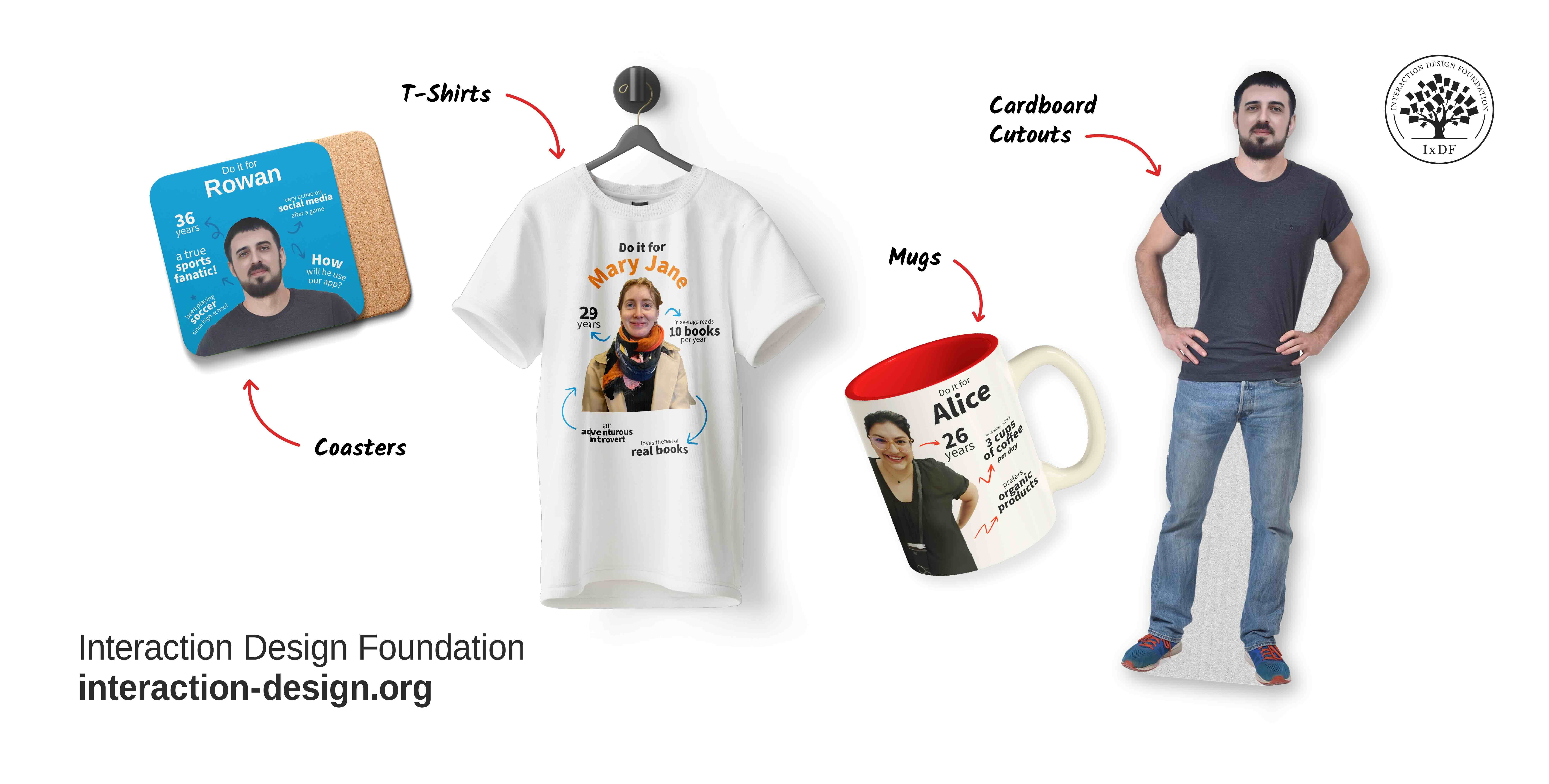
© Interaction Design Foundation, CC BY-SA 4.0
Great personas aren’t just characters—they’re collaborators. Make them credible, make them memorable, and most of all, make them part of your team’s everyday language.
3. Make It a Franchise
Personas aren’t one-and-done. Your product evolves—and your personas need to grow with it.
If your MVP persona is still guiding your enterprise redesign three years later, it’s like using the original Fast & Furious cast to plan a space mission. The story’s changed. The characters need to, too.
4. Watch Out for Bad Casting
Some personas look good on paper but fall flat in practice—especially when they’re built on stereotypes, assumptions, or shallow data.
If your persona feels fake, exaggerated, or unlikable, your team won’t connect with them. Think less “stock character” and more “authentic lead.”
5. Cut the Deleted Scenes
Long, bloated personas dilute the message. Your team doesn’t need to know what your persona had for lunch unless it directly affects their user behavior.
Keep what’s essential—goals, behaviors, context, pain points—and trim the rest. Save the cinematic world-building for Hollywood.
6. Build a Writers’ Room
The best stories are written together. Don’t build personas in isolation.
Use affinity diagramming, collaborative workshops, and co-creation with stakeholders. Shared insight equals shared ownership. And shared ownership means your personas will actually get used.
Now… cue the final scene.
The Take Away
Hollywood doesn’t just entertain—it teaches us how to create unforgettable characters. That same storytelling magic can transform how you build personas and help you advance your career.
Here’s how to steal the scriptwriting secrets:
Give personas clear goals and motivations. Let your team know what your persona is striving for—and why it matters.
Use real voices, not assumptions. Let research speak louder than guesswork.
Include relevant backstories. Context turns a profile into a person.
Make personas visually real. A face your team can picture is a person they’ll remember.
Keep things simple and focused. A tight character arc beats a bloated ensemble.
Design for real people—not abstract roles. Your audience isn’t “Users 18–35.” It’s Priya, Tasha, and Albert.
Just like in film, if your character is flat or unbelievable, the audience tunes out. In UX design, that audience is your team, and if they don’t believe in your persona, they won’t design for them.
Hollywood spends millions to bring characters to life. UX design teams sometimes spend weeks… only to make personas no one ever looks at again. So don’t aim for personas that look impressive in a slide deck. Aim for personas that get used—in design reviews, product decisions, and testing plans.
Be the screenwriter. Be the director. Be the casting agent.
Craft personas with empathy, clarity, and truth. And make them the stars your product—and your users—deserve.
Lights. Research. Action.
References and Where to Learn More
Want to know more about personas and how to use them effectively? Personas and User Research: Design Products and Services People Need and Want will show you how to gather meaningful user insights, avoid bias, and build research-backed personas that help you design intuitive, relevant products. You’ll walk away with practical skills and a certificate that demonstrates your expertise in user research and persona creation.
Read Storytelling and a Narrative Analysis Based Method for Extracting Users’ Motives in UX Design Processes to learn how user stories, like product reviews, can help you understand what really motivates users and create better, more emotionally engaging experiences.
Read Pixar’s 22 Rules of Storytelling (adapted by Emma Coats) to learn more about storytelling.

